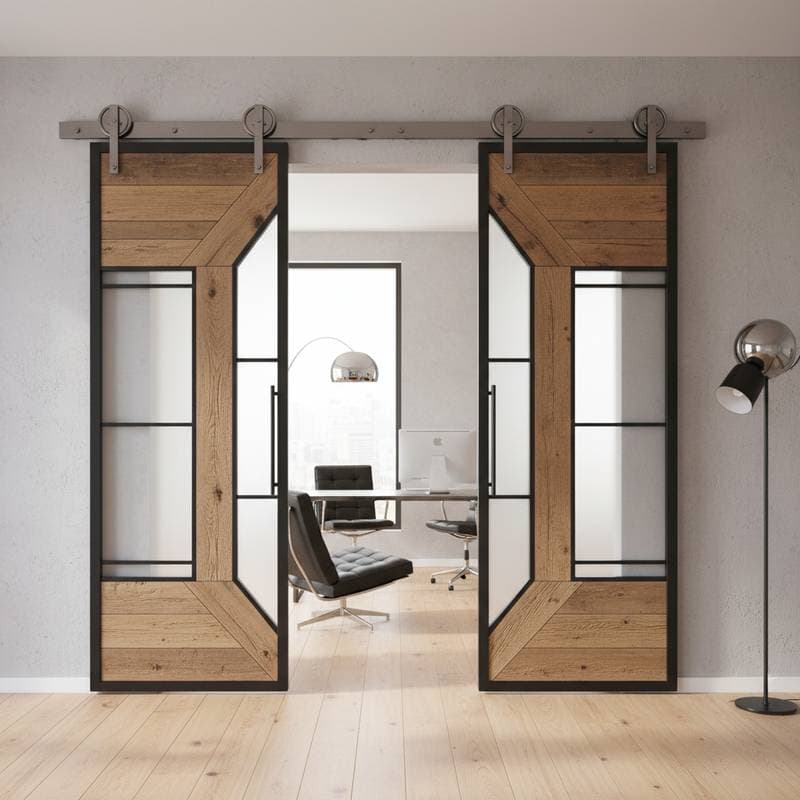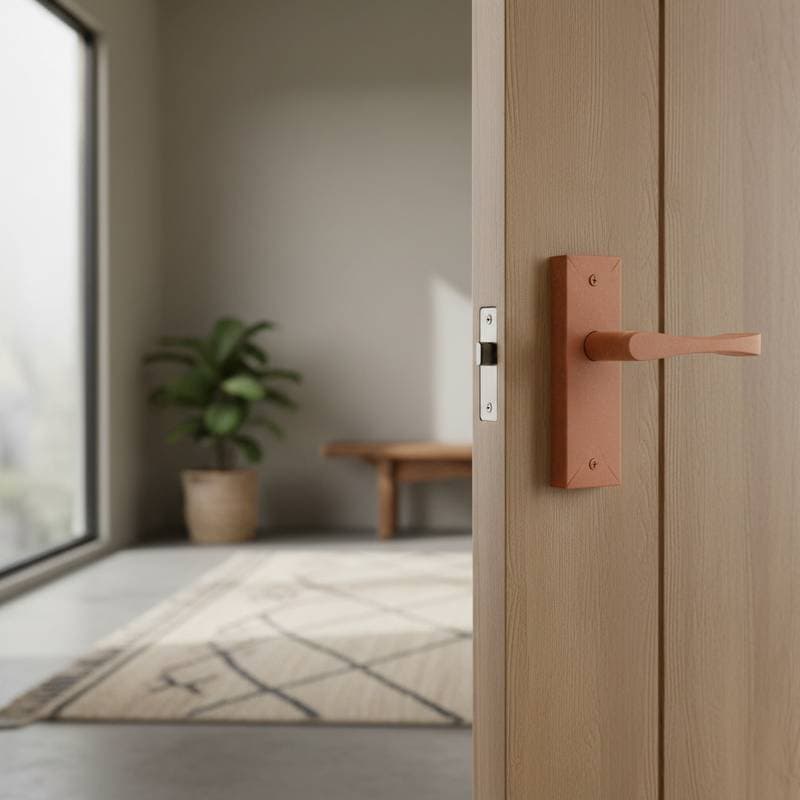Industrial Barn Doors: The $800 Style Revolution
Industrial barn doors serve as a key interior element for homeowners seeking character, utility, and architectural depth. Originally functional on farms, these doors now function as focal points in modern lofts and traditional residences. Current models integrate raw metal finishes, sturdy wood panels, and precise hardware for aesthetic impact and enduring strength. At about eight hundred dollars for a quality setup, this option provides a balanced investment that alters room ambiance without extensive renovations.
The Appeal of Industrial Barn Doors
Industrial barn doors balance rustic genuineness with technical accuracy. Materials such as reclaimed wood, steel, and powder-coated iron produce a robust yet subtle appearance. Sliding mechanisms conserve floor area and support flexible wall configurations, unlike traditional swinging doors. Homeowners favor them in open layouts where sightlines between spaces rival the need for seclusion.
Design flexibility stands out as a primary advantage. A solid oak panel paired with matte black hardware integrates into a farmhouse kitchen. In contrast, a frosted glass insert with brushed nickel accents complements a modern office. This aesthetic pairs well with diverse elements, including concrete flooring, exposed beams, or brick surfaces.
Material and Hardware Choices
Selecting a barn door extends beyond panel aesthetics to include hardware performance and visual focus. Hardware systems determine operational reliability and design prominence. Typical materials encompass:
- Steel hardware tracks: These endure heavy loads and come in black, bronze, or silver finishes for durability.
- Wood panels: Choices span pine, oak, walnut, and reclaimed barn wood, each with distinct grain and hues.
- Glass inserts: Such features permit light passage while maintaining division. Tinted or textured variants enhance privacy without reducing illumination.
Consider long-term behavior during selection. Steel withstands abrasion and frequent use, whereas softer woods benefit from periodic refinishing. Superior hardware ensures quiet, fluid movement with little upkeep. Tracks should align precisely for stability.
Comparing Options
| Option | Initial Cost | Lifespan | Maintenance | Best For |
|---|---|---|---|---|
| Solid wood door with steel track | $700 to $900 | 15 to 25 years | Occasional polishing and lubrication | Classic interiors, rustic themes |
| Glass and metal composite door | $800 to $1,100 | 20 to 30 years | Cleaning glass, lubricating rollers | Modern or industrial spaces |
| Reclaimed wood door with antique hardware | $600 to $950 | 10 to 20 years | Refinishing wood, tightening bolts | Eclectic and vintage designs |
This comparison highlights alignments with design objectives and care routines. Prioritize aesthetics, durability, or ease of maintenance when deciding.
Understanding the Installation Process
Barn door installation demands thorough preparation, particularly for structural integrity. The sequence includes:
- Planning and evaluation: Measure the opening accurately, verify wall clearance for sliding, and note obstructions like switches or vents.
- Preparation steps: Strengthen the mounting area, possibly by installing a header board for secure attachment.
- Main implementation: Secure the track, fit rollers to the door, and suspend the panel. Fine-tune for even traversal.
- Quality assurance: Verify smooth roller operation, firm stops, and flush wall closure.
- Completion and follow-up: Add finishing elements, test handles, and confirm safety devices like anti-jump brackets.
Professionals charge several hundred dollars for installation, though skilled DIY efforts succeed with appropriate tools and care. Heavy steel elements often justify expert involvement for precision.
Space and Lifestyle Considerations
Barn doors shape daily spatial dynamics beyond aesthetics. Sliding action avoids swing clearance, ideal for tight rooms or corridors. In expansive areas, they segment without fully isolating, as in kitchens linked to dining spaces where visuals persist amid contained sounds and scents.
Privacy adjusts by type. Solid wood offers complete enclosure, while glass versions allow partial views. Acoustic transmission exceeds that of hinged doors, so add weather-stripping or soft-close mechanisms for bedrooms or baths.
These doors infuse warmth and artisanal quality into sleek environments. Personalization options, such as repainting or hardware updates, sustain relevance over time.
Durability and Maintenance Over Time
Quality industrial barn doors endure for decades with routine care. Key areas include:
- Rollers and bearings: Lubricate regularly to preserve effortless motion.
- Track alignment: Address shifts from settling by securing bolts.
- Wood finish: Renew sealants every few years against moisture and marks.
- Hardware corrosion: Select galvanized or coated steel in damp settings to avert rust.
Surface mounting simplifies part replacements or finish refreshes. This adaptability supports ongoing design evolution.
Cost and Value Balance
An eight-hundred-dollar investment in an industrial barn door equates style gains with practical benefits. Budget alternatives risk thin panels or weak tracks that fail prematurely. Custom variants with premium glass or metals exceed thousands.
This price tier yields high returns through visual elevation and utility. Resale advantages arise from evident design intent and spatial efficiency.
Matching Your Interior Style
Industrial barn doors adapt to varied settings via scale and material harmony. Effective pairings involve:
- Loft or modern environments: Steel-framed glass with clear or frosted panels preserves airiness.
- Farmhouse or rustic dwellings: Distressed wood with dark metal hardware evokes tradition.
- Transitional spaces: Smooth wood paired with brushed steel or brass tracks merges comfort and sharpness.
Doors function as artistic statements. Reclaimed wood reveals natural narratives through knots and grains. Matte black variants provide clean, understated emphasis.
Planning for Installation Success
Assess wall composition, ceiling elevation, and load limits prior to purchase. Robust doors require reinforced framing beyond basic drywall. Relocate outlets or trim to accommodate the path. Incorporate soft-close kits, guides, and stops for enhanced operation and security.
Selecting for Lasting Impact
Choose an industrial barn door by aligning design vision, care commitments, and future flexibility. This element merges engineering reliability with organic appeal, offering sustained worth and personality. Thoughtful selection and premium components elevate it from trend to timeless asset.






